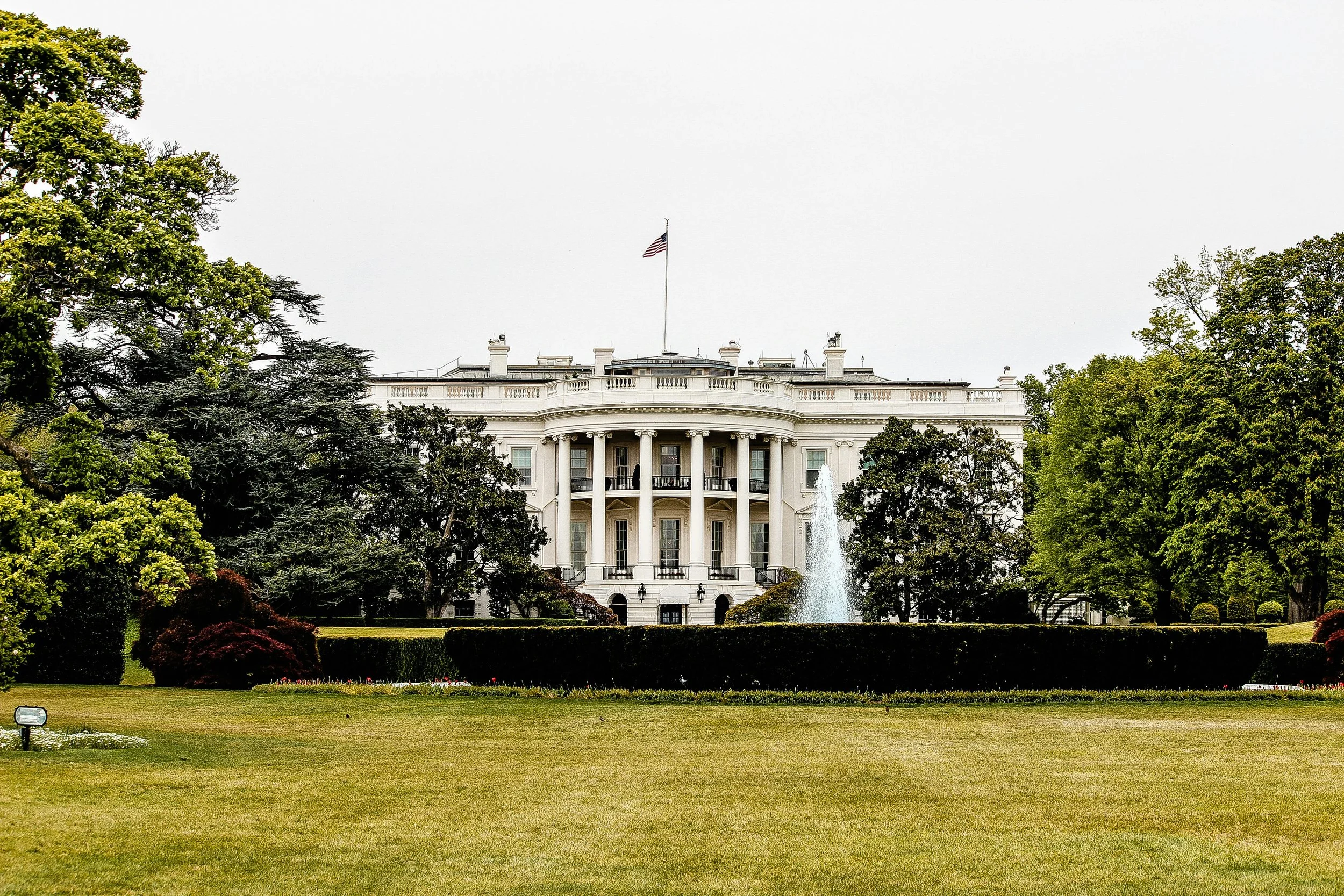Trump Got Elected: What to Do Right Now
Photo by René DeAnda on Unsplash
Okay, it’s over. Here are the four things you need to make happen.
Double down on major gifts even as you continue to build community
Merge
Find your people
Protect yourself personally
Now, why do these four things? To answer that question, you’re going to need some background in psychology. Here we go...
Do you agree or disagree with the following statements?
If someone is successful, they must have worked hard for it.
Bad things only happen to people who make poor choices.
People who suffer hardships probably brought it on themselves.
Good people wind up with good outcomes in the end.
The more that you agreed with these four statements, the more likely it is that you voted for Donald Trump. Trump won the presidential election running on a platform that largely follows what social scientists call the “Just World Hypothesis” (JWH). The four statements suggest that outcomes are directly tied to an individual’s actions or character, a central idea of the JWH.
The JWH is a cognitive bias, a mental shortcut people use to make sense of the world around them. In this case, it reinforces the belief that life is fair and predictable, that “people get what they deserve.” This bias can make people feel more secure because it allows them to believe that they can avoid negative outcomes by making “good” choices.
However, this cognitive bias often leads to victim-blaming, where people assume those who suffer must have done something to deserve it. It also causes people to underestimate the role of external factors, like chance (plain bad luck) or systemic inequalities, in shaping outcomes. So, in other words, if you’re a victim, it’s your fault.
Neo-Liberalism's Impact on Nonprofits
The Just World Hypothesis (JWH) subtly but powerfully reinforces a political philosophy called “neoliberalism.” Neoliberals believe this is how life works: everything is a competition, humans are perfectly rational decision-makers, and they act primarily out of self-interest. This mentality underpins neoliberalism’s emphasis on a meritocracy – a level playing field where anyone can succeed if they work hard enough.
The JWH plays right into this, nurturing the idea that those who rise to the top deserve to be there. Wealth becomes a reward for virtue, while poverty is simply the price of failure. This mindset supports the notion that billionaires are heroes of their own making, while the poor, well, they just didn’t try hard enough.
In neoliberal thought, this idea of competition and self-interest supports a largely unregulated free market as the best way to create prosperity for all. According to neoliberalism, the less government regulation there is, the more wealth the very wealthy can accumulate – and that, they argue, is ultimately good for everyone. This “trickle-down” belief proposes that equipping the people who control the means of production (the wealthy) with even more money will inspire productivity, with wealth eventually trickling down to the middle class and the poor. This is the essence of supply-side economics. The JWH gives cognitive fuel to this model by framing economic winners and losers as deserving of their outcomes, naturally justifying the consolidation of wealth among the few.
Yet history shows that, rather than benefiting all, a low-regulation environment often leads to market manipulation by the wealthy, who create monopolies that serve their interests. The reality is that supply-side economics has been thoroughly debunked by the vast majority of economists, yet it persists in policy circles because it’s a handy justification for funneling more wealth to the very rich. The JWH helps cement this view, nudging people to believe that inequality is just an outcome of different talents, ambitions, and risk-taking behaviors. Policies that might help close the wealth gap become “handouts,” while neoliberalism’s ideal of “everyone fending for themselves” seems fair and natural.
Neoliberalism’s emphasis on individual responsibility leads to overlooking the social and economic structures that shape people’s lives. Here, the JWH steps in to support the belief that people’s circumstances are purely their own doing, minimizing or even dismissing the complex social forces – discrimination, systemic inequality – that trap people in disadvantage. As a result, neoliberal policies that cut welfare, healthcare, and education can appear justified, since, in the JWH worldview, people’s outcomes are deserved. Limited government intervention thus becomes morally defensible.
When neoliberals argue for privatizing public services, claiming that competition will deliver these services more efficiently than government programs, the JWH also plays a role. With the underlying belief that individuals should “earn” access to services like healthcare, education, and housing, it becomes easy to overlook the necessity of these programs. The JWH perspective slips in here as well, with the subtle suggestion that if someone can’t pay for these essential services, maybe they just didn’t work hard enough to “deserve” them.
The intersection of neoliberalism with the Just World Hypothesis creates a funnel where more and more money flows into the hands of the wealthy, widening the wealth gap. As neoliberalism strengthens its hold, the middle class diminishes and poverty rates rise, with more formerly middle-class individuals slipping into destitution. The JWH and neoliberalism together make it easy to let these structural issues go unchallenged by comforting people with the idea that society is already fair, and everyone simply gets what they deserve. This worldview lets society off the hook for addressing inequality, allowing the wealthiest to continue consolidating resources under the moral license of a “just world.”
What Does Neo-Liberalism + JWH Look Like in Action?
JWH + Neo-Liberalism: If you’re poor it’s because you don’t work hard enough.
Trump platform: Programs for the poor will be cut.
JWH + Neo-Liberalism: Women are weak and need to be dominated and protected.
Trump platform: Take away reproductive rights of women.
JWH + Neo-Liberalism: The rich are wealthy because they deserve to be.
Trump platform: Reduce taxes on the rich and corporations.
JWH + Neo-Liberalism: The wealthy should make decisions for everyone else.
Trump platform: Install the wealthiest in positions of power.
JWH + Neo-Liberalism: If you’re sick it is because your behaviors made you sick.
Trump platform: Eliminate or diminish the Affordable Care Act.
JWH + Neo-Liberalism: The rich having more capital to invest helps everyone.
Trump platform: Enterprise programs for under-represented groups go away.
The impact of these policies on America—and by extension, the world—will be suffering. We’ll see the social safety net fray even further as Medicaid, Medicare, and Social Security face cuts. The push to dismantle the Department of Education will hit our most vulnerable kids, wiping out Head Start and other lifelines for at-risk children. Programs for people with disabilities will lose funding. And the list goes on. The underlying message? “If you need help, that’s on you—not our problem.” It’s a brutal shift that leaves the people who need support the most to fend for themselves in a system increasingly designed to look the other way.
What Will Be the Impact on Nonprofits?
Governmental antagonism
Expect the government to turn from a partner to an obstacle, hostile toward efforts to help those seen as “undeserving.” In this mindset, aid is wasted on people who, supposedly, haven’t “earned” it. At best, there will be ambivalence toward social programs; at worst, legislation will actively block us from doing the work that’s needed. We’re already seeing signs: DEI initiatives are now illegal in some states, and abortion care is being restricted. Expect more red tape and hurdles as government attitudes shift, making it harder to support vulnerable populations.
Will lower taxes help giving?
Sure, taxes will go down—but mainly for the wealthy. For everyone else, proposed tariffs and rising costs of living will hit hard. Middle- and lower-income households will feel the squeeze, with more of their budgets eaten up by necessities. Tax relief for the middle class is negligible and will not help giving.
Small donors diminish further
The small donor, the loyal, mission-driven supporter, is on the decline. Typically, these donors give modestly for one of two reasons: either they only have a little to give, or they’re in the early stages of what could grow into a much larger donor relationship. But now, the decline isn’t just about nonprofits’ focus on large donors—it’s also about financial strain. Many simply won’t have the funds to contribute, meaning that small-donor support will dry up as household budgets get tighter.
Large donors will give more
As the wealthy benefit from lower taxes and new opportunities, they’ll have even more resources to give. Large donors will increasingly become the backbone of funding, especially as the middle class continues to struggle. The gap will widen, with nonprofits relying more heavily on high-net-worth individuals as small and mid-level donations dwindle. We’ll likely see even more concentration of influence, with major donors holding more sway over nonprofits’ directions and priorities.
Need for services will increase
Meanwhile, as policy changes kick in, the need for services will only grow. Demand for everything from food assistance to housing support will rise as people face financial hardships. Communities that rely on nonprofits for critical help will feel squeezed more than ever, creating a gap between the rising demand for services and the resources available to meet it. Nonprofits will be expected to do more with less, stepping into the breach where the social safety net has weakened.
What to Do?
Focus on Community-Building and Major Donors
The big picture still revolves around building a loyal community of supporters—that’s the path to lasting success and sustainability. But let’s be real: the house is on fire! So right now, strengthening your major donor program is essential. Major donor portfolios are likely to hold steady, while middle and small donors will face real financial distress. Rage-giving may flare up, but that’s a short-term phenomenon. As policy changes take hold, anger will fade into fear, survival mode, and a scarcity mindset. This is the time to fortify your base with major supporters who can help carry you through.
Merge for More Impact
Every time there’s a fight in a boardroom, a new nonprofit seems to pop up. Our country is overflowing with nonprofits, often duplicating efforts in the same spaces. Now is the time to work smarter, not splinter off into more small organizations. The real competition isn’t other nonprofits; it’s the very forces causing the suffering we’re trying to address. Pool resources, share insights, and find ways to collaborate. Together, you’ll accomplish far more than by going it alone.
Find Your People
You need a community, a space where you can commiserate and brainstorm with others who get it because this will be hard. If you’re in social good, check out Turnkey’s Community or find another group that aligns with your mission and values. And if there isn’t one that fits, build it. Connecting with like-minded people is more than networking—it’s the fuel that will keep you going, providing support, ideas, and solidarity in challenging times. If you are stuck, email me. I will help you find your people.
Take Care of Yourself
Remember, you’re the one saving others, so put the oxygen mask on yourself first. Breathe deeply. Recharge. Without you, the work doesn’t happen. Self-care isn’t a luxury now; it’s essential to be able to keep going. In times like these, resilience starts with you taking care of yourself, so you can keep taking care of others.
That’s all I got. I love you. I love that you love humanity.

